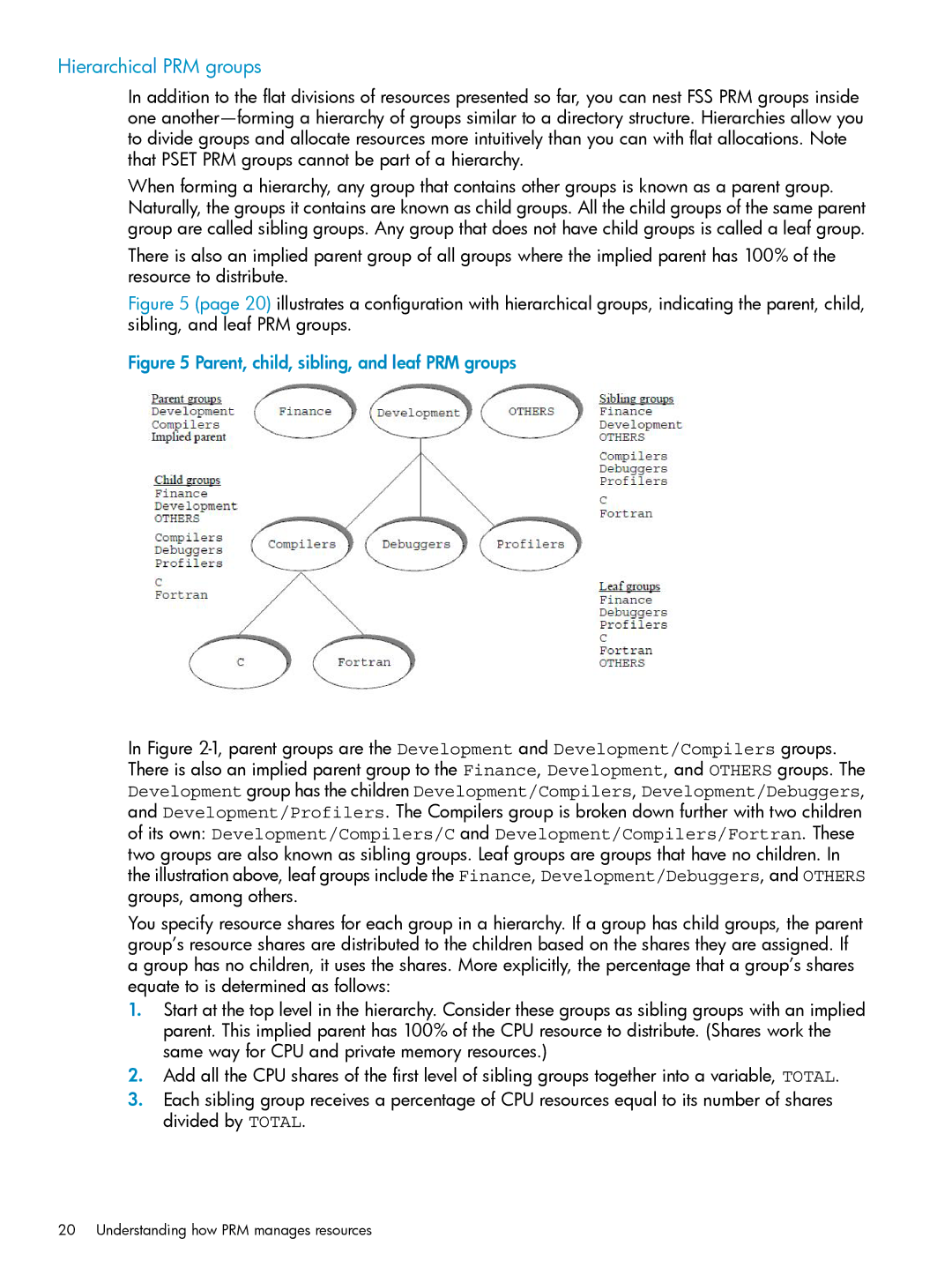
Hierarchical PRM groups
In addition to the flat divisions of resources presented so far, you can nest FSS PRM groups inside one
When forming a hierarchy, any group that contains other groups is known as a parent group. Naturally, the groups it contains are known as child groups. All the child groups of the same parent group are called sibling groups. Any group that does not have child groups is called a leaf group.
There is also an implied parent group of all groups where the implied parent has 100% of the resource to distribute.
Figure 5 (page 20) illustrates a configuration with hierarchical groups, indicating the parent, child, sibling, and leaf PRM groups.
Figure 5 Parent, child, sibling, and leaf PRM groups
In Figure
You specify resource shares for each group in a hierarchy. If a group has child groups, the parent group’s resource shares are distributed to the children based on the shares they are assigned. If a group has no children, it uses the shares. More explicitly, the percentage that a group’s shares equate to is determined as follows:
1.Start at the top level in the hierarchy. Consider these groups as sibling groups with an implied parent. This implied parent has 100% of the CPU resource to distribute. (Shares work the same way for CPU and private memory resources.)
2.Add all the CPU shares of the first level of sibling groups together into a variable, TOTAL.
3.Each sibling group receives a percentage of CPU resources equal to its number of shares divided by TOTAL.
20 Understanding how PRM manages resources
